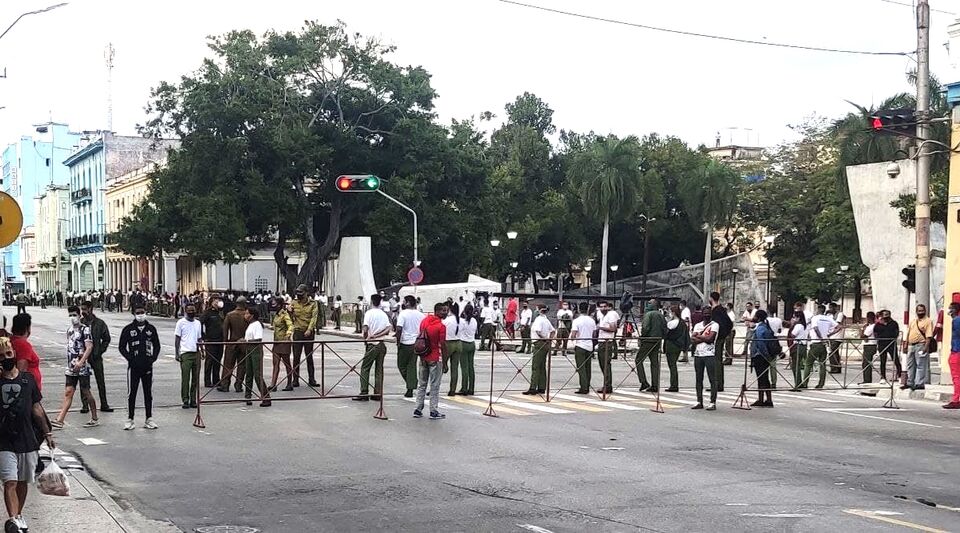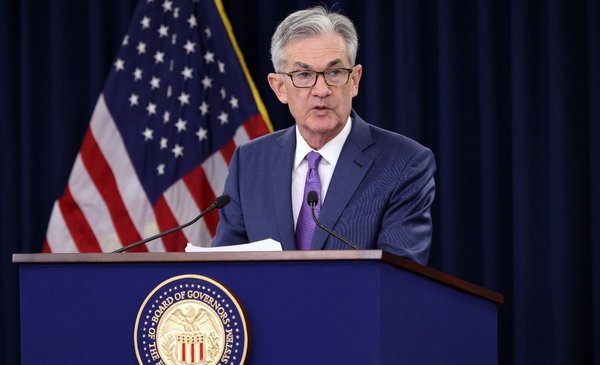Cordons of uniformed men and plainclothes agents guarded all the streets through which the official delegation that participated in the March of the Torches on the eve of José Martí’s birthday passed this Thursday night in Havana. But the strong security operation began two days ago in El Vedado and Centro Habana, neighborhoods where the University of Havana is located, site of the act that began at around 8:30 pm with the presence of Raúl Castro and the ruler Miguel Diaz-Canel.
“And what is happening here today, is someone big coming?” Asked this Thursday a woman who was waiting to buy refreshments in a cafeteria on Hospital Street in Key West, Central Havana. “It seems so, someone big and with a big belly is coming,” answered another woman who was in the same queue and everyone present burst out laughing.
Neighbors wondered what all the fuss was about as they watched rehearsals for the Torchlight March, one of the largest that Central Havana residents remember before the July 11 social outburst.
The March of the Torches is a military and political act that takes place every January 27 on the eve of the celebration of the birth of Jose Martí. The pilgrimage, which is a symbolic act for the Cuban regime, rather than a tribute to Martí, is always presided over by the highest leaders of the Communist Party, the University Student Federation and representatives of other political organizations.
Historically, the Government summons, under pressure, university students to attend, although many young people make an appearance for only a few minutes and then end up escaping through the alleys through which the caravan passes.
Starting at noon on January 25, hundreds of soldiers practically stormed part of El Vedado, where the university steps are located and the march begins, as well as a large part of the Cayo Hueso neighborhood, mainly the surroundings of La Fragua Martiana where the act ends. .
A few meters away, another large group of soldiers from the Directorate of Immigration and Aliens climbed the stairs of another building and rehearsed how to act this Thursday night. Some lamented because they had not eaten for long hours, because they had come from a concentration where details about the operation were explained to them. “I can’t take it anymore because I’m hungry,” one of the agents complained, to which other of his colleagues replied in a mocking tone: “Drink plenty of water, so you can fool your stomach.”
On Hospital Street, high-ranking officials from the Ministry of the Interior reviewed the instructions he had given to State Security agents dressed in civilian clothes. “The two of them are going to join you here,” ordered one of the chiefs who, previously, had placed the uniformed men in the houses that border San Lázaro street so that they can watch the development of the official act from the balconies. A few minutes later, the young people were seen leaning out of balconies and windows that overlook the streets through which Miguel Díaz-Canel and his entourage will pass tonight.
The coffee shops in the area were also not spared the avalanche of green uniforms. In the A tu tiempo cafeteria, which is located on the corner of Hospital and Jovellar streets, dozens of cadets from the Ministry of the Interior bought all the cookies and sticks on Tuesday afternoon before the astonished gaze of the customers waiting in line . Then they quickly retreated to the Parque de los Mártires where they were concentrated for several hours.
In the last two years, several tragedies have mourned the country in the days leading up to this same celebration. A tornado caused great destruction in areas of the capital in 2018, leaving in its wake eight dead, 200 injured and more than a thousand homes destroyed. In 2020 the collapse of a balcony caused the death of three girls in Old Havana, but the protests of civil society did not prevent the Government from maintaining the official act.
The first March of the Torches was organized on January 27, 1953 as a tribute to José Martí on the 100th anniversary of his birth. Although the Government of Fulgencio Batista did not grant permission to carry it out, the students marched without the police intervening.
Ironically, this year’s march takes place when hundreds of citizens are being sentenced to long prison terms for marching on July 11 in a peaceful act of social protest through the streets of the entire country calling for political changes and freedoms.
________________________
Collaborate with our work:
The team of 14ymedio is committed to doing serious journalism that reflects the reality of deep Cuba. Thank you for joining us on this long road. We invite you to continue supporting us, but this time becoming a member of our journal. Together we can continue transforming journalism in Cuba.





